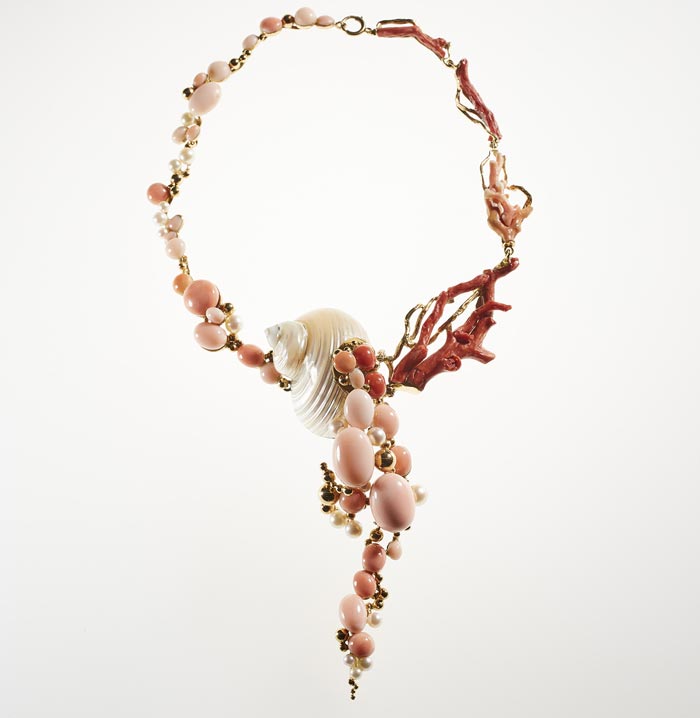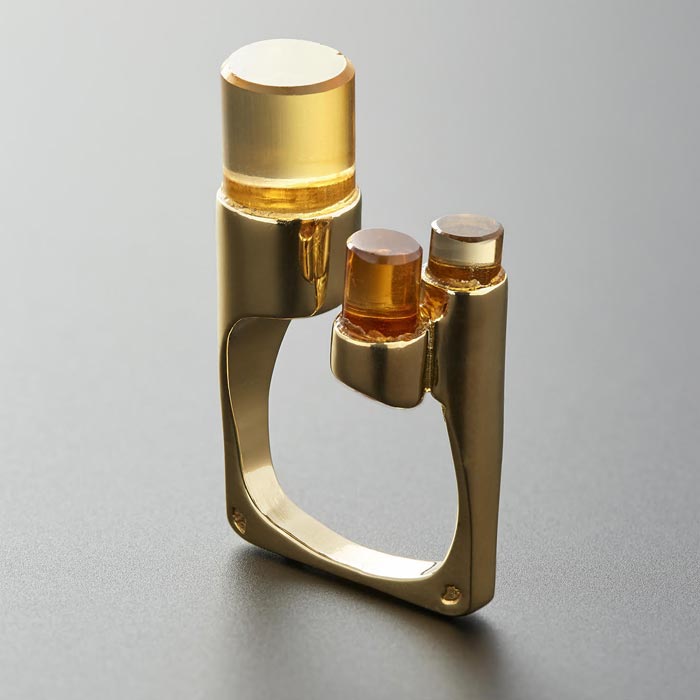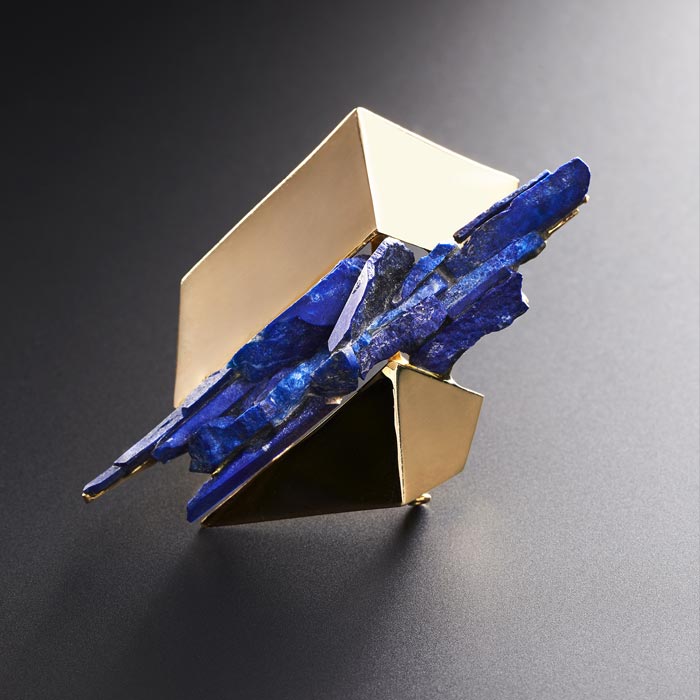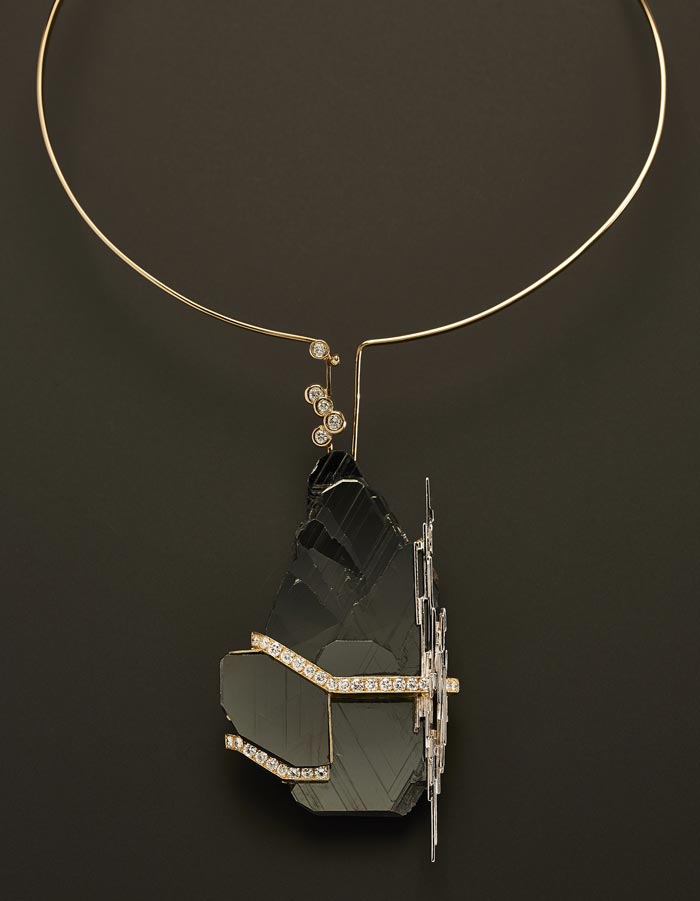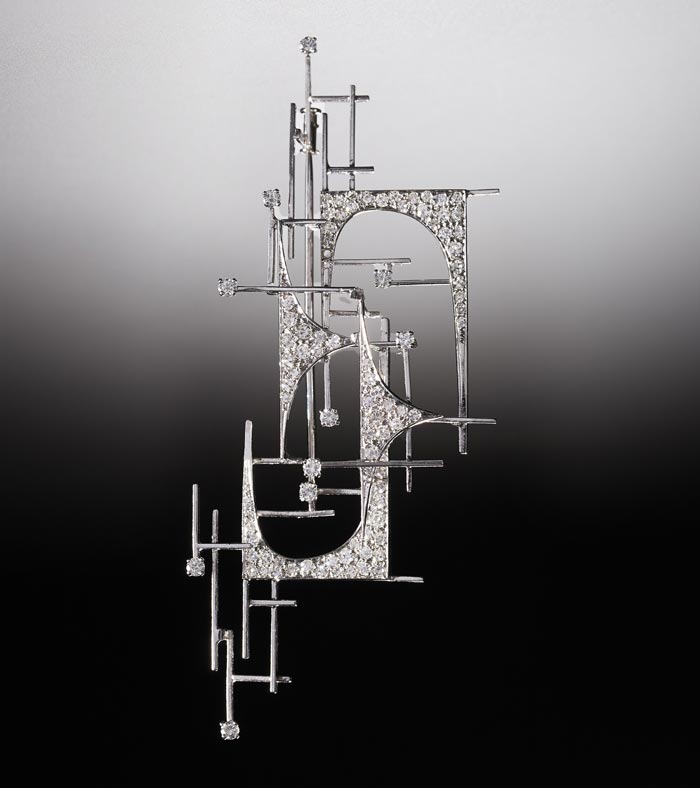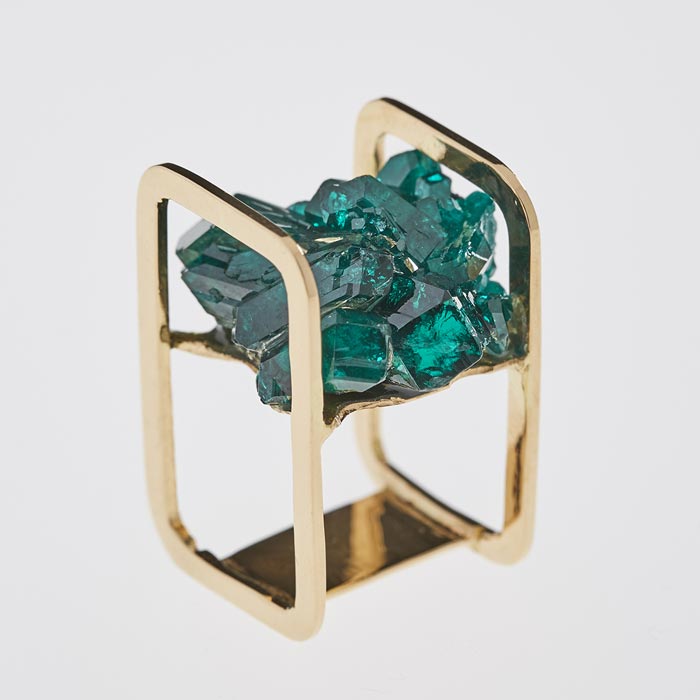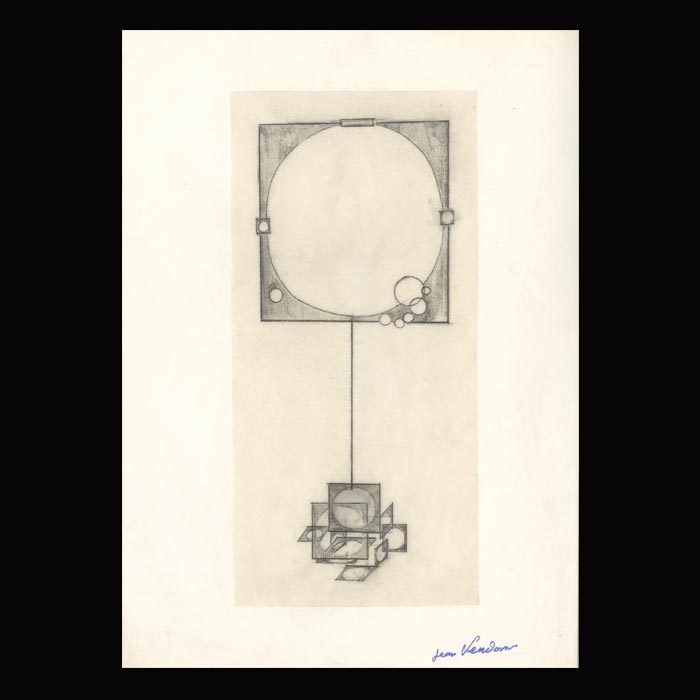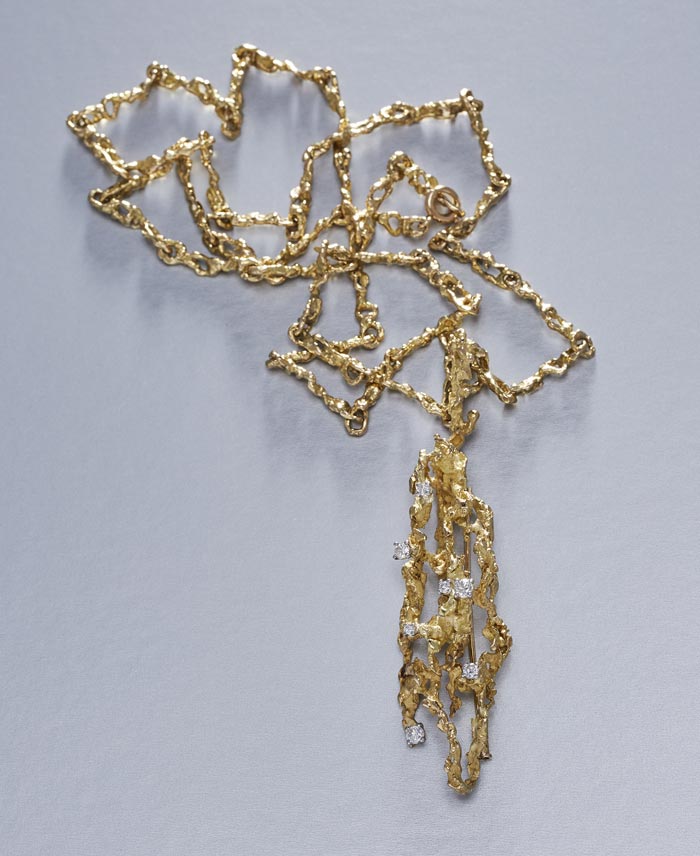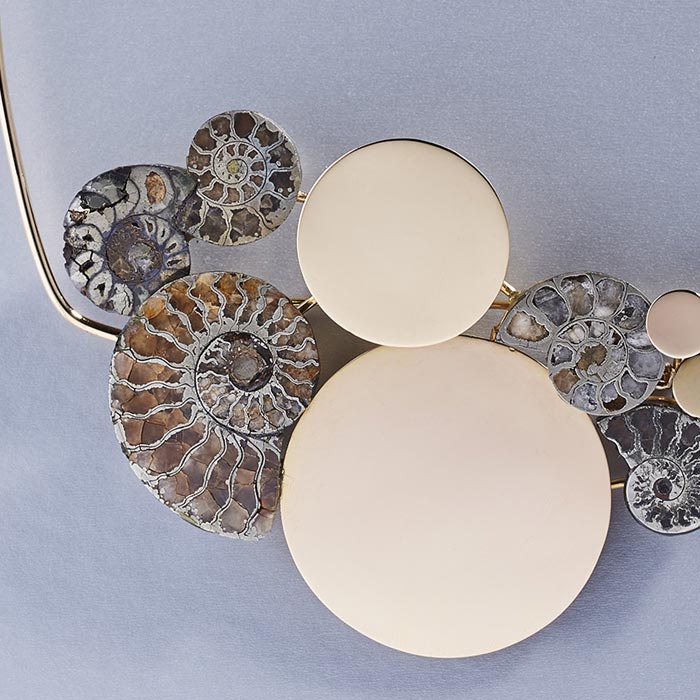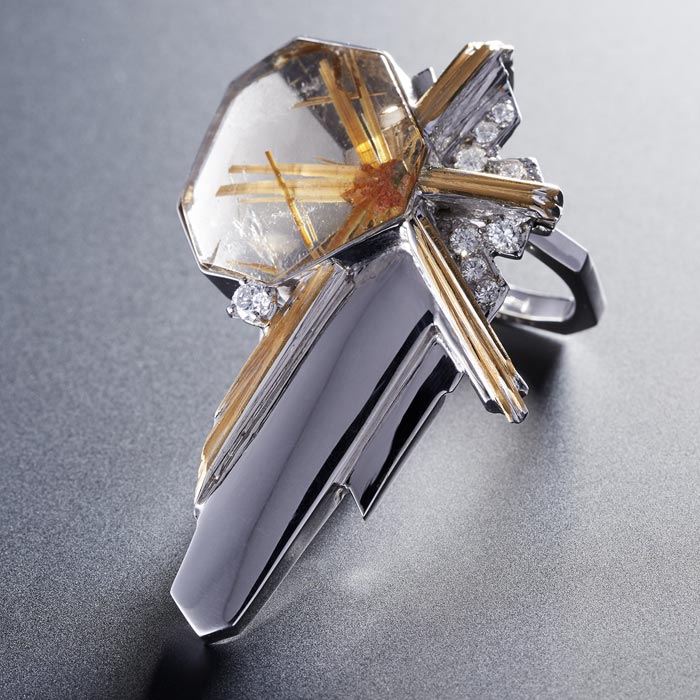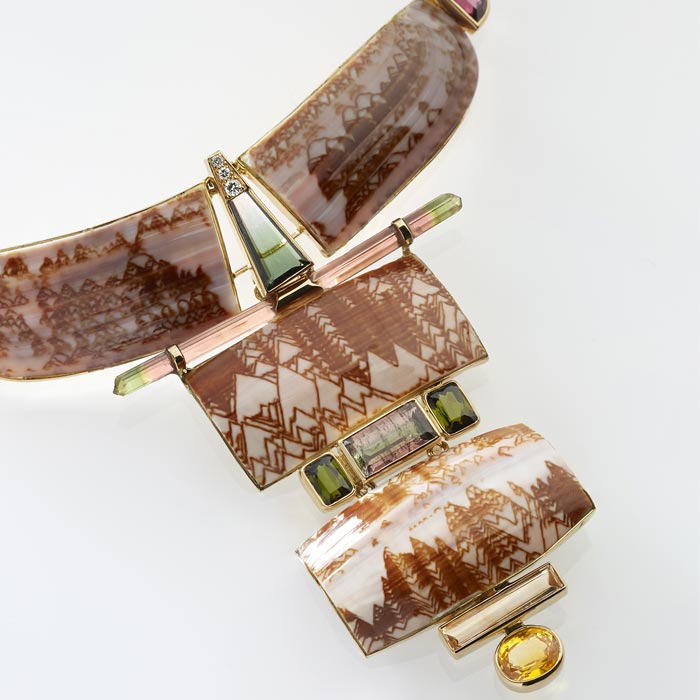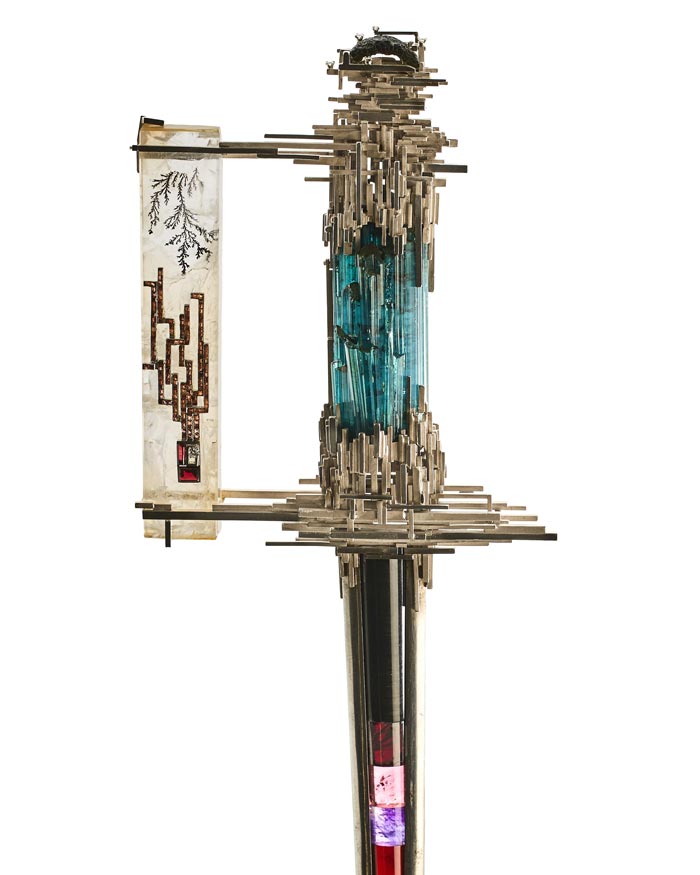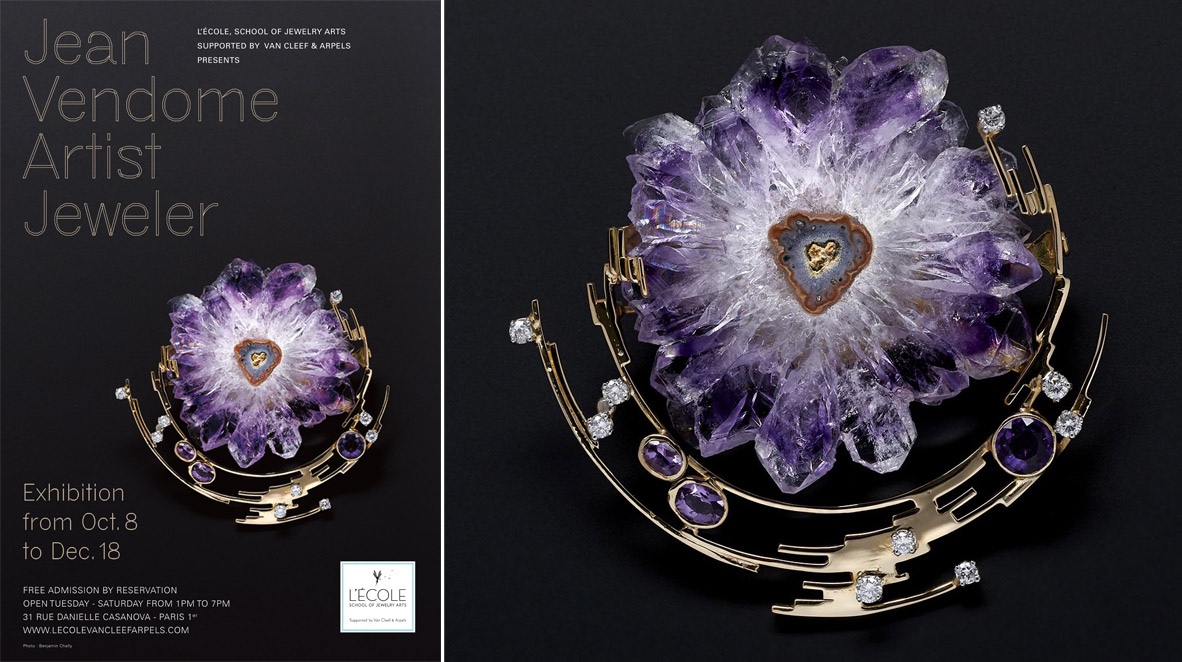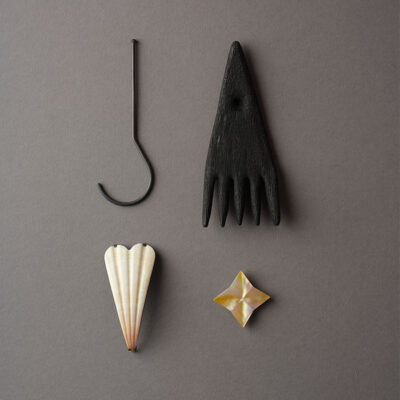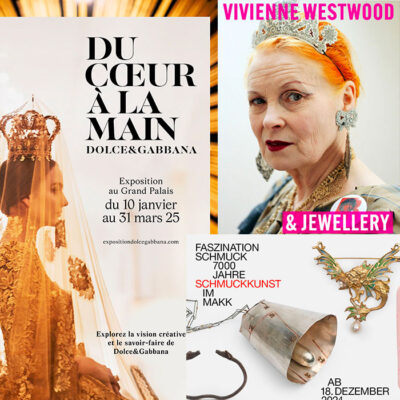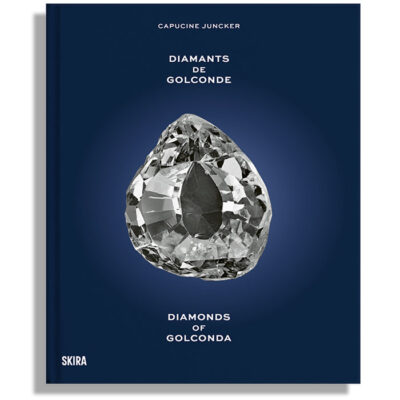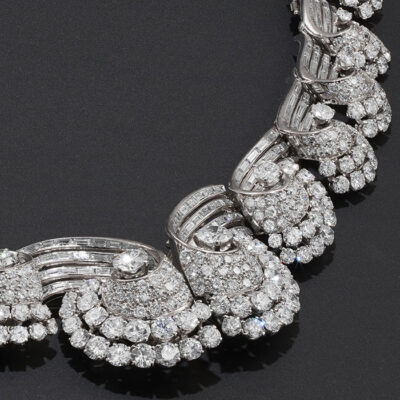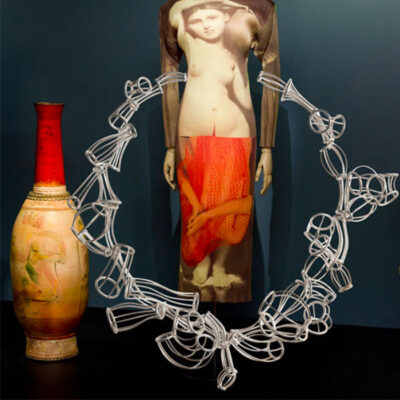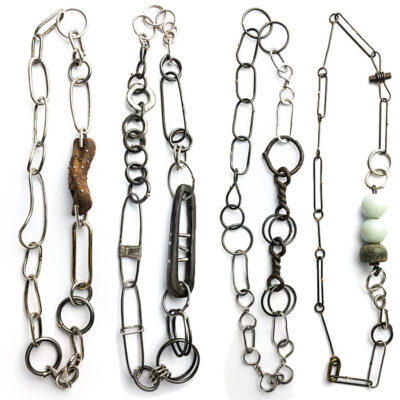My agenda
01 September 2020
Share
“Behind the scenes at the Jean Vendome exhibition”, The School of Jewelry Arts
A consequence of COVID: for its 8th Parisian exhibition “Jean Vendome, Artist Jeweler”, The School of Jewelry Arts has set up a series of private visits followed by meetings with experts. An immense privilege, with groups numbering just 6.
This series of private visits followed by meetings, entitled “Les Coulisses de l’Exposition“ (“Behind the Scenes of the Exhibition”), revolves around 6 themes. For two hours, each curator, a gemologist or an art historian offers a unique insight into the work of Jean Vendome, considered a pioneer of contemporary jewelry. You can attend one or all of them, by reservation only.
“Jean Vendome : his story told by the curator of the exhibition”
This format offers a unique opportunity to interact directly with Sophie Lefèvre, the exhibition curator. No one knows the Vendome better than her (with the exception of the jeweler’s son Thierry). “For 5 years, I met Jean Vendome once a week because he wanted me to write a book. He would tell me about his work, his love of bizarre stones, his techniques, inspirations and life story”, explains Lefèvre. During those encounters he also told her about the health problems that forced him to leave school early, his apprenticeship, and his job in a workshop specializing in daisy rings… Lefèvre shines a spotlight on this perspicacious and tireless man who challenged received wisdom. ´Prolific´ is another fitting epithet – from the opening of his boutique on Saint-Honoré Street in 1968 to its closing in 2007, he made 30,000 mostly unique pieces of jewelry.
“Life is a series of chance encounters”
In this lecture, Sophie Lefèvre focuses on one of the leitmotivs of Jean Vendome, who was always an outlier: “life is a series of chance encounters”. One of the first figures in his life was Dina Level, an outstanding gemologist who passed on her passion for minerals. Then came his meetings with Jean Cocteau who entered his store to have a jewel made, or Paul-Emile Victor who had his watches repaired each time he returned from expeditions to the polar circles. The captivating story of his adventures inspired Jean Vendome to create the “Boréal” line. For Lefèvre, “the most decisive meeting was with Roger Caillois, for whom he designed the ceremonial sword when Caillois was appointed to the Académie Française. These two mineral enthusiasts became friends and went to fairs together. They sought out the most beautiful specimens, gave them to each other as presents, and shared them – until the day when Roger Caillois collapsed and died of a heart attack while buying an agate from Brazil. He just had time to bequeath this stone to Jean Vendome, “the only one who could understand it”. Indeed the jeweler immediately picked up on what Caillois had seen in this pictorial stone: the river Alphée, the subject of his final book.
“Design in the creative process”
Drawing is a gateway to the world of Jean Vendome, it could even be the subject of an exhibition in its own right. The lecture by Inezita Gay-Eckel, historian of jewelry at The School of Jewelry Arts, tackles a subject that’s much more fascinating than it at first appears. The jeweler draws non-stop directly on any type of support with a felt tip pen or pencil, without prior sketching. Gay-Eckel explains what makes his drawings so exceptional – both artistic and very technical. Another oddity is that these drawings, made on loose sheets of paper, are neither signed, nor annotated, nor dated, which makes it almost impossible to establish a chronology. And there are practically no molds, since Jean Vendome made the jewel himself directly by hand and as quickly as possible without recourse to models or lost casting wax! He wanted to preserve the upsurge of creative emotion intact.
“The art of Jean Vendome: Jewelry of the Avant-Garde?”
Baudelaire’s notion of “the beautiful and the bizarre” perfectly encapsulates Vendome’s style – even hovering at times between the sublime and the ugly. The School of Jewelry Arts explores this theme with its professor of jewelry history, Léonard Pouy. He situates the jewels of Jean Vendome in the context of an effervescent era of questioning art. Freed from all rules, they resemble sculptures with asymmetrical shapes playing with light, transparency and emptiness. In 1956, the asymmetrical and open “Tour” ring seemed totally incongruous, people even thought that a piece of metal was missing! Léonard goes on to explain the techniques inherent to these animated jewels – full of surprises and yet always wearable, which was always a primacy concern of Jean Vendome. Take for example the triangular “Ferret” ring, whose articulated point stretches to the wrist? It can also be transformed into a pendant.
“The poetics of stones” and “A love of unusual stones”
Two lectures are devoted to stones, an essential subject and one of the main keys to reading jewels. One lecture focuses on the gemological aspect with Isabelle Delahaye, professor at The School of Jewelry Arts, while the other one explores the sonority of the names (cobaltocalcite, staurolite from Brittany, dioptase or ghost quartz) – likean echo of their strange beauty. Jean Vendome cares little for value, he even recycles stones that are sold by the kilo and cover the bottom of his aquarium. He is especially fond of those with defects, – quirks of nature manifesting themselves through organic landscapes or geometric structure. He works the tourmalines in polychrome stained glass and plays with the scales and circumferences of amethyst flowers – and what audacity he displays in the compositions! Then there are stones – associated with “banal” crab claws, shells or dinosaur bone – with which he made cufflinks for General de Gaulle. His language is infinite.
“Jean Vendome’s swords for Academicians, symbolic gems”
Jean Vendome made 9 ceremonial swords for members appointed to the Académie Française. In “Behind the Scenes at the Jean Vendome exhibition” Catherine Cardinal, Professor Emeritus of Universities and co-author of the exhibition catalog, looks back at those of Julien Green (1972), Maurice Schumann (1975), and Robert Marjolin (1985), as well as those of René de Obaldia (2000). But his main focus is on Roger Caillois’ sword, which is presented in the exhibition. Produced in 1971, it affirms the man’s authority while reflecting his personality and his work. So, everything has a meaning… The (stylized) octopus reminds us that Caillois considered this animal, with its magnificent eyes, to be the most intelligent in the world! The five small diamonds represent “La Croix du Sud”, the Gallimard collection created and directed by Caillois. The green tourmaline on the handle is a reference to Brazil, a country the intellectual often visited. Meanwhile, the blade inlaid with a stained glass panel of stones harks back to his favorite technique.
Jean Vendome’s work, so rich and singular, richly deserves this exhibition and its exceptional series of lectures.
« Behind the Scenes at Jean Vendome Exhibition » from 8 October to 18 December 2020 at The School of Jewelry Arts – 2h – 50 euros
Information and subscription, here
Related articles:
Jean Vendome in the “Gems” exhibition
The Vendome family: Thierry the son



